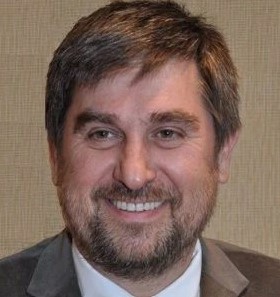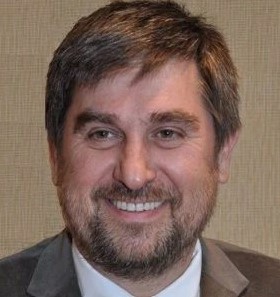Technology Predictions: Art, Science, and Fashion
Technology Predictions: Art, Science, and Fashion

Abstract: Predicting the future is never easy, it always entails a degree of uncertainty, if not luck. Predicting technology trends is even harder as it requires both technical and business acumen, e.g., whether the technology will be developed, productized, and ultimately adopted on the market. It is almost an art to distill between a fashion and a true scientific trend. At the same time, the public likes to read predictions and many individuals and organizations regularly write technology predictions, such as Gartner, MIT, Forbes and many others regularly produce predictions. IEEE Computer Society started its technology predictions informally in early 2010 and formally via annual press releases in 2014, followed by their respective scorecards in 2016. We realized that our audience appreciates self-evaluation, hence we introduced scorecards at the end of the period of prediction. Our predictions reached substantial audience, e.g., in 2018, it was picked up by 300 media outlets (84.6M audience), which is entirely different from classical publishing. We considered predictions as a new type of publication, a lightweight, short publication (approximately a paragraph per prediction). These predictions also triggered other media outreach, such as blogs, interviews, panel sessions, and this special issue of IEEE Computer magazine. Over the years we became better in press releases and social media announcing our report, to the extent that it became visible at the IEEE Board of Directors, and found its way to the report of the IEEE Executive Director. One notable side-product that grew out of our predictions was the 2022 report that comprehensively predicted 23 technologies 7 years ahead. This report had a sister report written by Industrial Technology Research Institute (ITRI), Taiwan on technology predictions specific to Asia. These technology predictions surpassed all our expectations in terms of impact, and we plan to continue for as long as audience has interest.
Date and Time
Location
Hosts
Registration
-
 Add Event to Calendar
Add Event to Calendar
Loading virtual attendance info...
- Contact Event Hosts
-
*IMPORTANT* Please ensure the email in your IEEE profile is correct & that your preferences are set to receive local eNotices. Sometimes information from us ends up in the Spam folder and opportunities to learn new stuff/network is lost!
- Co-sponsored by George Pappas
Speakers
 Dejan S. Milojicic of IEEE Computer Society
Dejan S. Milojicic of IEEE Computer Society
Technology Predictions: Art, Science, and Fashion
Abstract: Predicting the future is never easy, it always entails a degree of uncertainty, if not luck. Predicting technology trends is even harder as it requires both technical and business acumen, e.g., whether the technology will be developed, productized, and ultimately adopted on the market. It is almost an art to distill between a fashion and a true scientific trend. At the same time, the public likes to read predictions and many individuals and organizations regularly write technology predictions, such as Gartner, MIT, Forbes and many others regularly produce predictions. IEEE Computer Society started its technology predictions informally in early 2010 and formally via annual press releases in 2014, followed by their respective scorecards in 2016. We realized that our audience appreciates self-evaluation, hence we introduced scorecards at the end of the period of prediction. Our predictions reached substantial audience, e.g., in 2018, it was picked up by 300 media outlets (84.6M audience), which is entirely different from classical publishing. We considered predictions as a new type of publication, a lightweight, short publication (approximately a paragraph per prediction). These predictions also triggered other media outreach, such as blogs, interviews, panel sessions, and this special issue of IEEE Computer magazine. Over the years we became better in press releases and social media announcing our report, to the extent that it became visible at the IEEE Board of Directors, and found its way to the report of the IEEE Executive Director. One notable side-product that grew out of our predictions was the 2022 report that comprehensively predicted 23 technologies 7 years ahead. This report had a sister report written by Industrial Technology Research Institute (ITRI), Taiwan on technology predictions specific to Asia. These technology predictions surpassed all our expectations in terms of impact, and we plan to continue for as long as audience has interest.
Biography:
Dejan S. Milojicic is an established researcher with a full career in industry, and a long-term IEEE Computer Society volunteer. As an Computer Society Board of Governors member, he participated in developing the Computer Society 2011 Strategic Plan. He is the founding editor in chief of Computing Now and an IEEE Internet Computing editorial board member. He was appointed first Special Technical Communities chair, and served as past chair of the Computer Society Technical Committee on Operating Systems and on many program committees (ICDCS, CLOUD, and EDOC, among others). An IEEE-CS, ACM, and Usenix member for more than 20 years, Milojicic is an IEEE Fellow, Computer Society Golden Core Member, and ACM Distinguished Engineer. He has received an Computer Society Outstanding Contribution award.
At HP Labs since 1998, Milojicic is a senior researcher and managing director of the Open Cirrus Cloud Computing Testbed. Previously, he was with OSF Research Institute in Cambridge, Massachusetts, and Institute Mihajlo Pupin in Belgrade, Serbia. He teaches cloud management at San Jose State University, California.
Milojicic received a PhD from Kaiserslautern University, Germany. He has served on six thesis committees and guided 40 interns. He has published two books, more than 120 papers, and been awarded 11 patents and 22 patent applications.
Hewlett Packard Labs
Email:
Address:Cyber City, United States, 48309
Agenda
6:00 PM - Welcome and Introductions, Chapter business update; break
6:05 PM - Technical Talk/Presentation
7:10 PM - Discussion, Q & A
7:20 PM - Wrap Up
/* ALL TIMES ARE USA EST/EDT (UTC-5) */
Hosted in co-operation with Computer Society. PDH is available only after you attend the event and request it via email, alternatively you can request it via the chat feature during the session.
Media
| Tech Predict FLYER | Tech Predict FLYER | 352.14 KiB |

